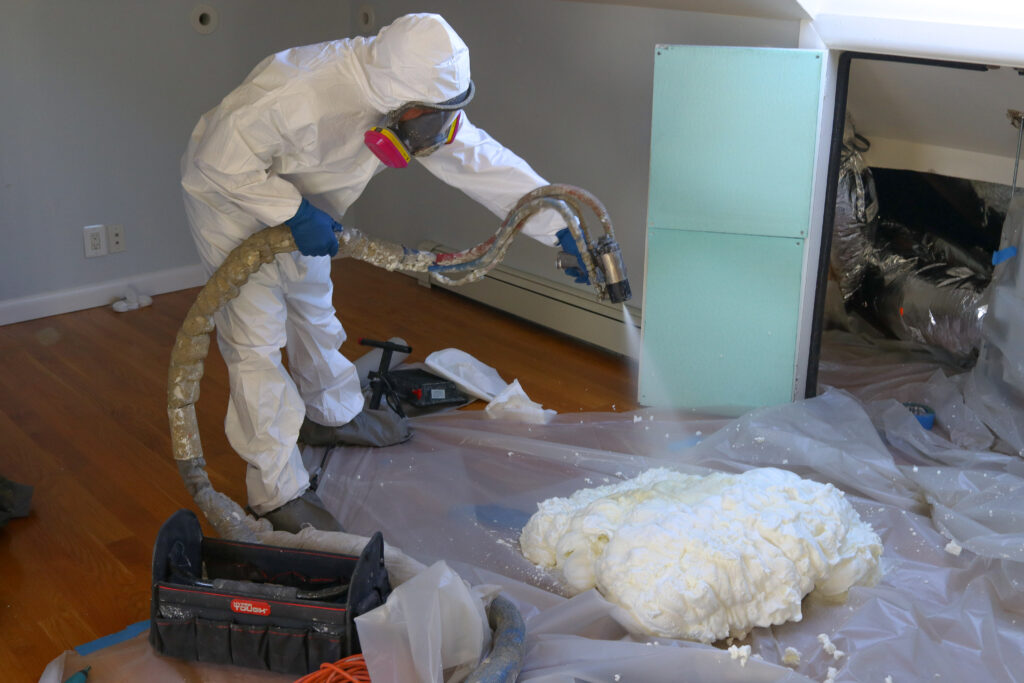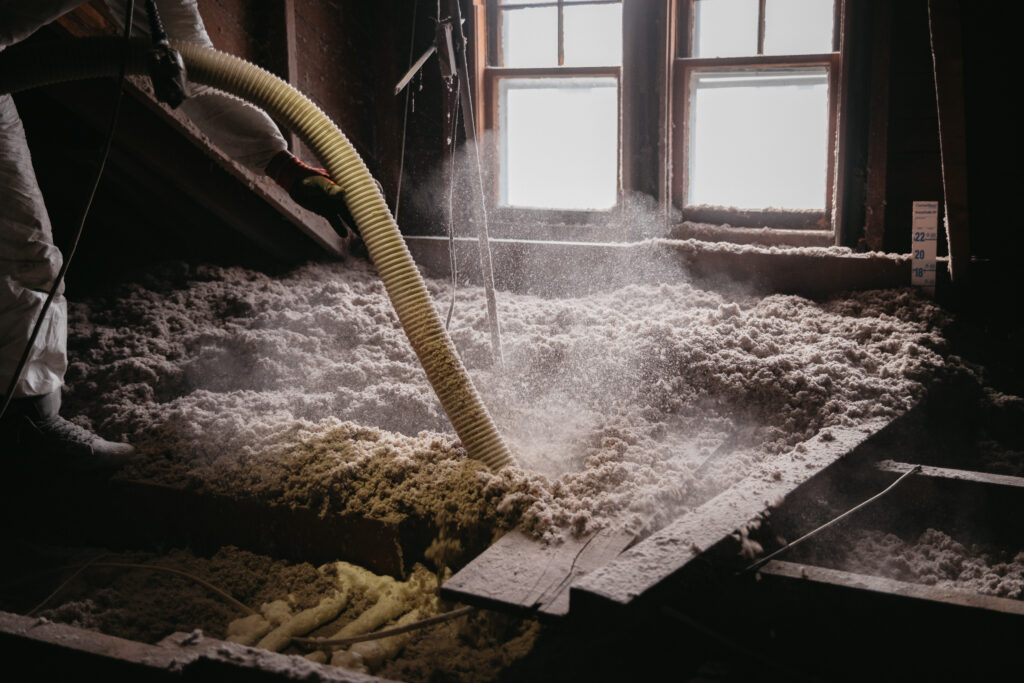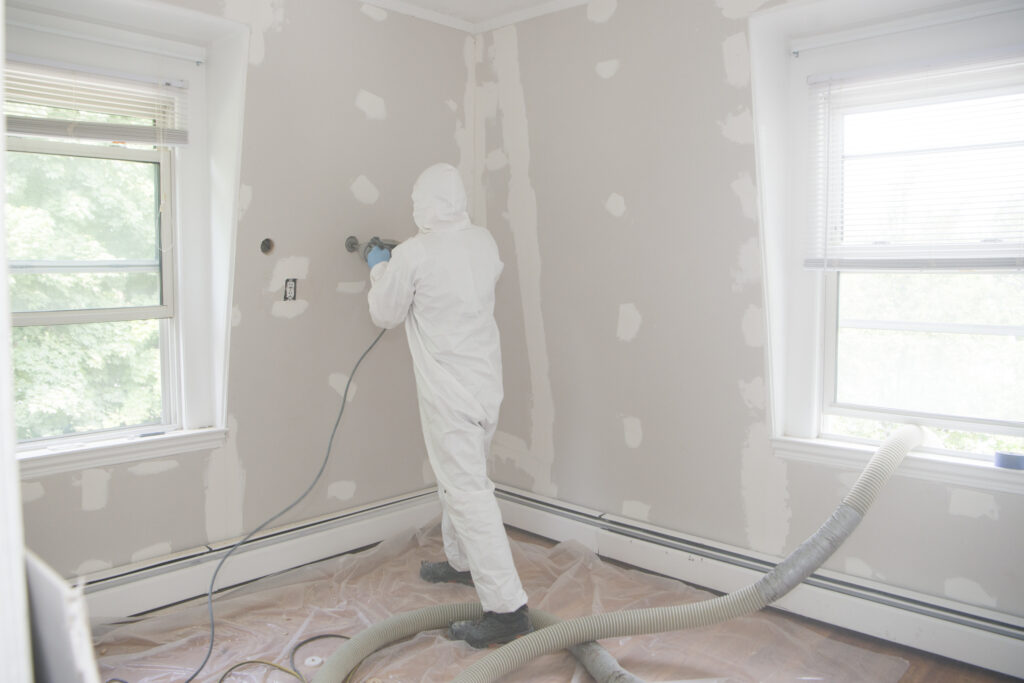
Insulating your home is almost always a good idea – it’s a cost-effective, low-effort way to boost efficiency and make your home more comfortable. But homeowners understandably have questions about the material that will be pumped into their houses, and how it’s going to get there. Are there unexpected safety issues? Long-term risks to the structure?
This actionable overview of common insulation questions will help you understand the basics of insulation, and give you tips for how to proceed from here.
So What Is This Material Made Out Of, Exactly?
When you think of insulation, you might first think of the fluffy, cotton-candy-pink slabs (known as “batts”) of insulation placed in attics or between walls. That’s fiberglass insulation, and it’s been a highly common option for decades – but it’s not the only choice.
The three most common recommended types of insulation:
- Cellulose: Blown-in cellulose is made primarily of recycled paper and although it can come in the familiar batt format, it is primarily “loose fill,” meaning it looks like a pile of fluff. Cellulose has become more popular in recent years because it’s low-cost and eco-friendly to produce, while also acting as a highly effective insulator when blown into walls or packed into other areas.
- Fiberglass: This is the familiar cotton-candy layers that have been the most common option for decades. Like cellulose, they can also be used as loose fill. The more energy-intensive type of insulation to produce, it also loses its insulation capability if it gets wet and doesn’t dry out adequately.
- Spray foam: A liquid polyurethane foam that hardens and expands after spraying into building cavities, spray foam both insulates and seals cracks. It is highly energy-intensive to make, and it’s a higher-risk option. If not installed properly, spray foam can trap moisture more easily and lead to rot and mold damage. Unlike the other options, spray foam is not eligible for home energy rebates.

What Impact Does Insulation Have On Fire Safety?
In other words: Does putting extra material in your walls mean fire will spread more rapidly?
Homeowners are particularly interested in cellulose, which is made of organic materials and therefore seems like it might be a higher-risk material. But cellulose is treated with fire retardants during manufacturing. When it comes into contact with fire, it will char rather than burn.
The National Fire Academy has given cellulose a flame spread rating of 25 or less – the best category for rapid burning. However: While cellulose insulation won’t make a fire spread rapidly throughout your home, it may continue to smolder after a fire appears to be put out. The Cellulose Insulation Manufacturers Association recommends building owners to tell firefighters if they have cellulose in their walls, so they can thoroughly extinguish any smoldering afterward, and then work to remove the cellulose to be sure all hazards are completely eliminated.
Fiberglass and blown insulation are non-combustable and fire-resistant. The only concern with these materials is if they are improperly installed. For example, if fiberglass is installed too close around a heat source and does not allow for ventilation, it may pose a fire risk.
Does Installing Insulation Mean Tearing Down Walls or Drilling Holes?
You don’t need to take down walls to install insulation – and drilled holes for loose-fill or blown insulation are easily patched up.
Although lots of insulation work involves putting rolls or loose-fill insulation in the attic floor or affixing batts of insulation on unfinished basement ceilings, insulating existing walls does require blowing loose-fill or blown-in insulation into wall cavities via drilled holes.
Typically, an installer drills a hole higher up in a wall (either exterior walls or interior walls). In some cases, this may require homeowners to re-paint interior walls, but often the end results look unobtrusive after the work is complete.

Does Insulation Increase Risks of Mold or Rot?
When installed properly, insulation does not trap moisture – it allows a building to “breathe” while also slowing heat transfer. But improper installation can indeed create problems.
Depending on the type of insulation, installers need to ensure materials aren’t packed too tightly or placed directly against roofing materials. Installers need to ensure insulated areas are ventilated to allow airflow, and homeowners can regularly inspect insulation for signs of mold growth to be sure any issues get solved right away.
Do I Need Insulation Everywhere In My House For It To Be Effective?
Not necessarily! Interior walls may not require insulation. But there are plenty of other areas where insulation can give your home a massive efficiency boost.
The attic, exterior walls, ceilings of unfinished basements, floors above unheated surfaces (such as garages) are good examples. Insulation largely eliminates hot/cold spots and makes your whole house more comfortable. Insulated ducts can be sealed and insulated as well.
Can I Install Insulation Myself?
Do-it-yourself installation comes with risks. For example, a professional can best judge how to blow cellulose so that it provides the best insulation coverage without getting overly packed and creating hazards for your home – and can pick the least obtrusive areas to drill holes in the wall, too.
If you’re ready to take advantage of Mass Save rebates, start with a home energy assessment with Neeeco. We are a Mass Save partner and can help you take advantage of Mass Save rebates for insulation, air sealing, heat pumps, and more.
*Some restrictions apply and offers are subject to change or cancellation. Visit MassSave.com/HEA for full details.
Call (781) 776-5711 or contact our team to schedule your no-cost Mass Save Home Energy Assessment.
